Assistant Professor of Political Science and International Affairs
George Washington University
Department of Political Science
21115 G. St. NW, 440 Monroe Hall
Washington, DC 20052
ericgryn [at] gwu.edu

| Home | CV | Research | Teaching | Non-State Allies |
| In 1888 and 1889, U.S.
warships, operating under orders to protect American lives and
property, began to conduct active military operations to defend
a rebel army in Samoa led by Mata'afa Iosefo. Mata'afa was
fighting against the German-backed Tamasese regime. Tensions in 1888 led the United States to dispatch three ships to Apia in 1889, all three of which were lost or damaged during a hurricane. These losses were startlingly when compared to the U.S. interests in Samoa. One ship, the USS Nipsic, was the first ship in the Navy to have electric lights, which cost $5000 to install. This sum was larger than the biggest commercial complaint against the German-backed government. The machinery on board the USS Vandalia was worth about three times the value of the largest single American investment in Samoa. And, the estimated amount to buy all of Samoa from Germany was about 330,000 pounds, or roundabout 1.7 million dollars, which was about half of the total value lost in that single day for the United States alone. This does not count the three German ships. I assume the lights on the Nipsic (pictured on the right) were lost. |
 |
x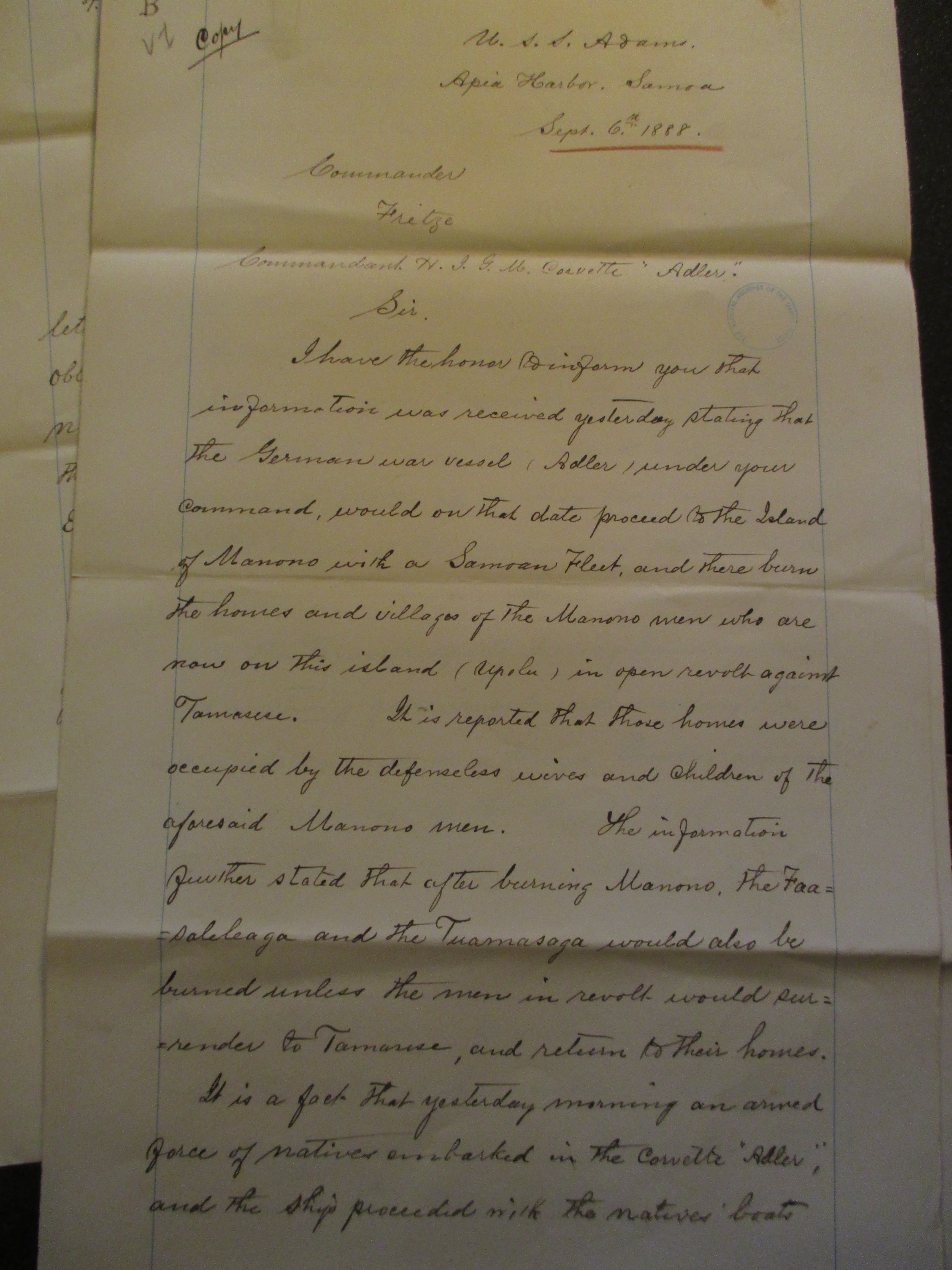 |
The standard story of intervention in Samoa, perhaps best evidenced in Paul Kennedy's Samoan Tangle, concentrates on great power diplomacy and the international conferences dedicated to Samoa. The action in his story is largely in Berlin and Washington. The origins of the alliance between the U.S. Navy and Mata'afa were located in Apia and not Washington. In August and September 1888, many Samoans rebelled against the Tamasese regime, selecting Mata'afa as their leader. The report on the right is the U.S. Vice Consul's dispatch (William Blacklock), who describes the fast moving events. As Samoans quickly began to join Mata'afa, the German Navy increasingly intervened to preserve the Tamasese regime's position. The only U.S. ship in port was the USS Adams, commanded by Richard Leary. Throughout September, the Adams' crew watched as German warships became increasingly active, bombarding Mata'afa's forces, sinking canoes, ferrying troops, and fortifying Tamasese's positions. Leary protested German intervention, although he did nothing tangible. The letter on the left represents one instance of these protests, where he describes the actions of a German ship (the Adler) as violating international law by actively intervening in the islands. |
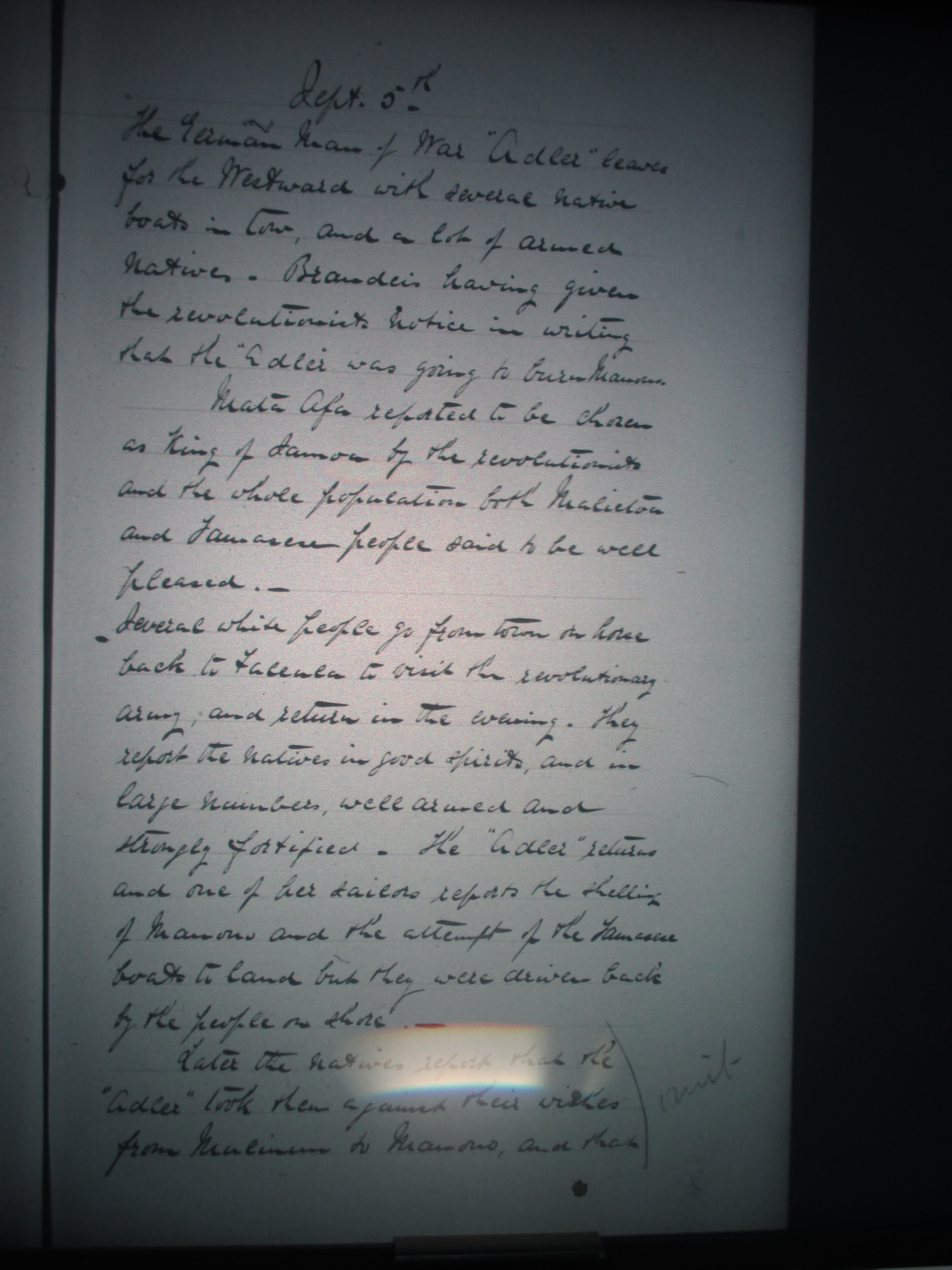 |
| Leary likely wanted to
intervene. He was limited, though, by his instructions to
protecting American lives and property. So long as the Germans did
nothing to hurt an American, they could support Tamasese and Leary
would have to sit on his hands. All of this changed on October 6, when some of Tamasese's warriors went to the home of Charles Scanlon, threatening his pigs at gun point. Scanlon ran to the U.S. Vice Consul, demanding protection. Here the story has an interesting legal feature. The State Department and U.S. Consulate had decided against the Scanlon family's citizenship claims years earlier, in part because they could not show naturalization papers, and in part because Charles and his brother had a Samoan mother. Yet, in the crisis that October, Blacklock and Leary were more than willing to take up the sword in defend Scanlon. Robert Louis Stevenson (the author of Treasure Island), who moved to Samoa a few years later and befriended many of the participants, provides a more detailed (and more gripping) account of the pigs. While the work is not entirely accurate, it makes for a wonderful read. |
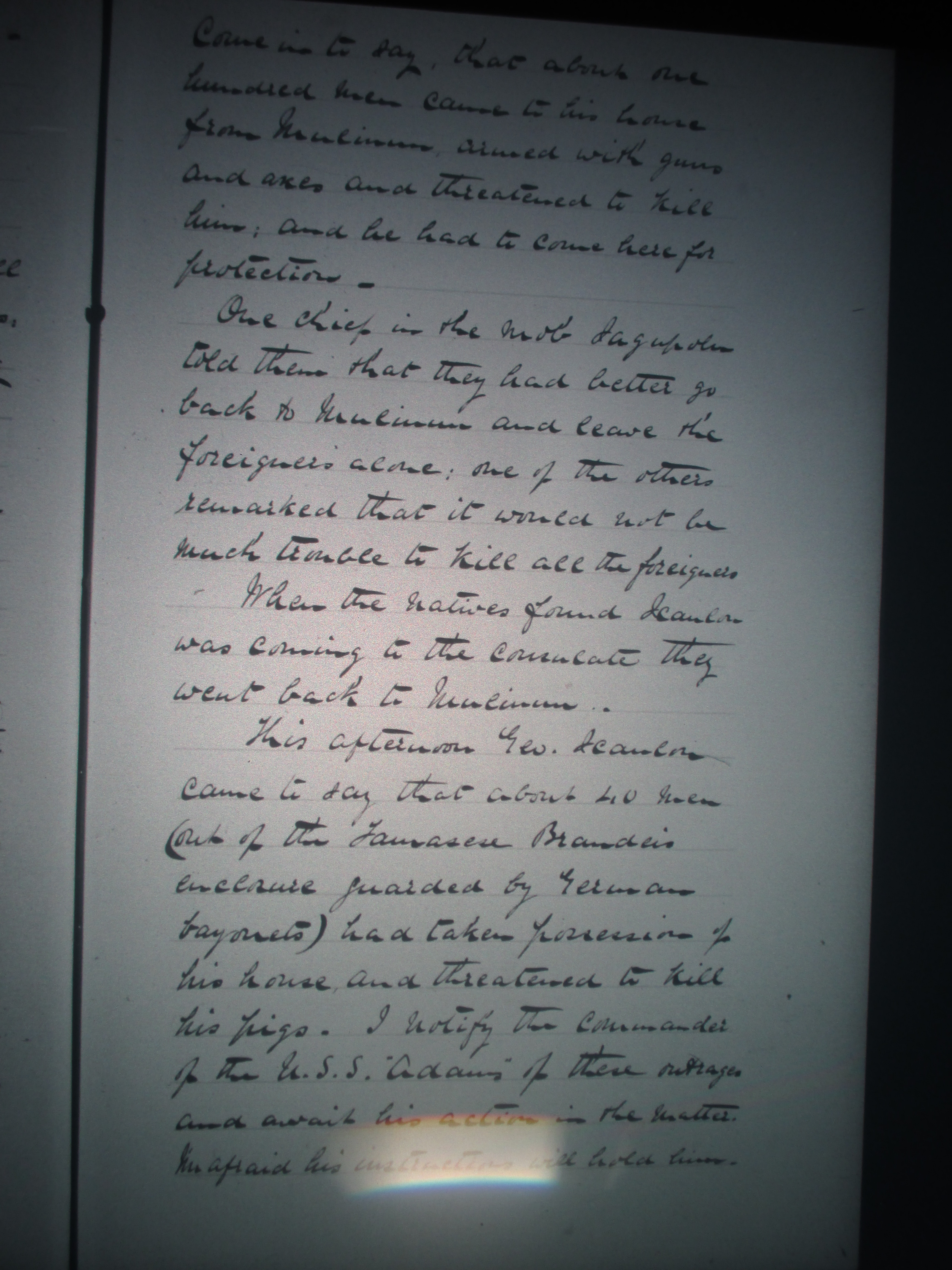 |
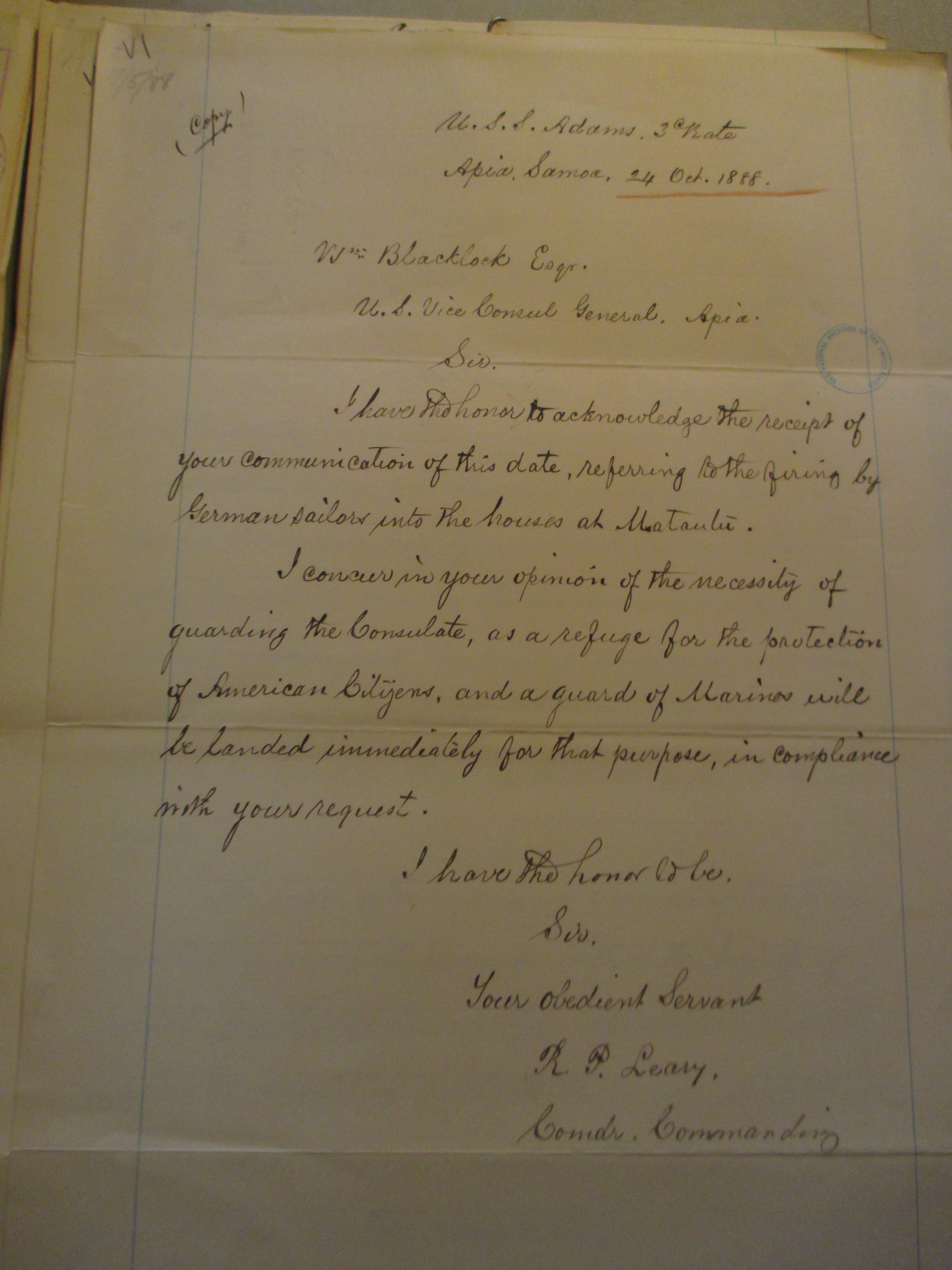 |
In
the book I address Leary's motivations. Leary did not care about
Scanlon's pigs. The fort near the Scanlon home was in or near
territory that was agreed to be neutral by Mata'afa and Tamasese.
Leary's intervention to save the Scanlon pigs was designed to
repel Tamasese from that territory. October 6 therefore marked an important date because Leary began to cite American property and lives as a justification to actively intervene on behalf of Mata'afa. In the book manuscript, I show that Leary and later American captains at least provided some arms to Mata'afa or Americans friendly to Mata'afa, collecting intelligence for him, and coordinated their operations with his. But, sometimes they went much further. The most notable instance was called "Leary's Big Bluff" by HJ Moors. On November 13, Leary heard that the Adler was planning on bombarding Mata'afa's forces the next morning. When the Adler tried to sneak out of the harbor, the Adams and a British ship followed. As the Adler neared Mata'afa's camp, the Adams ran up alongside. There are two versions of what happened next. In the version produced in the official log (pictured to the right), Leary sent a boat over to the Adler protesting the impending bombardment, after which the Adler returned to port. In the unofficial account, given in Ainslee's Magazine, the Adams sneaked between the Adler and Mata'afa's camp on shore, ran out its guns, and then dared the Germans to fire through the American ship. The German ship, not wanting to start a war, then backed down. On every account, Leary had saved Mata'afa's forces by claiming that there camp was on U.S. property, and therefore he was allowed to defend it. |
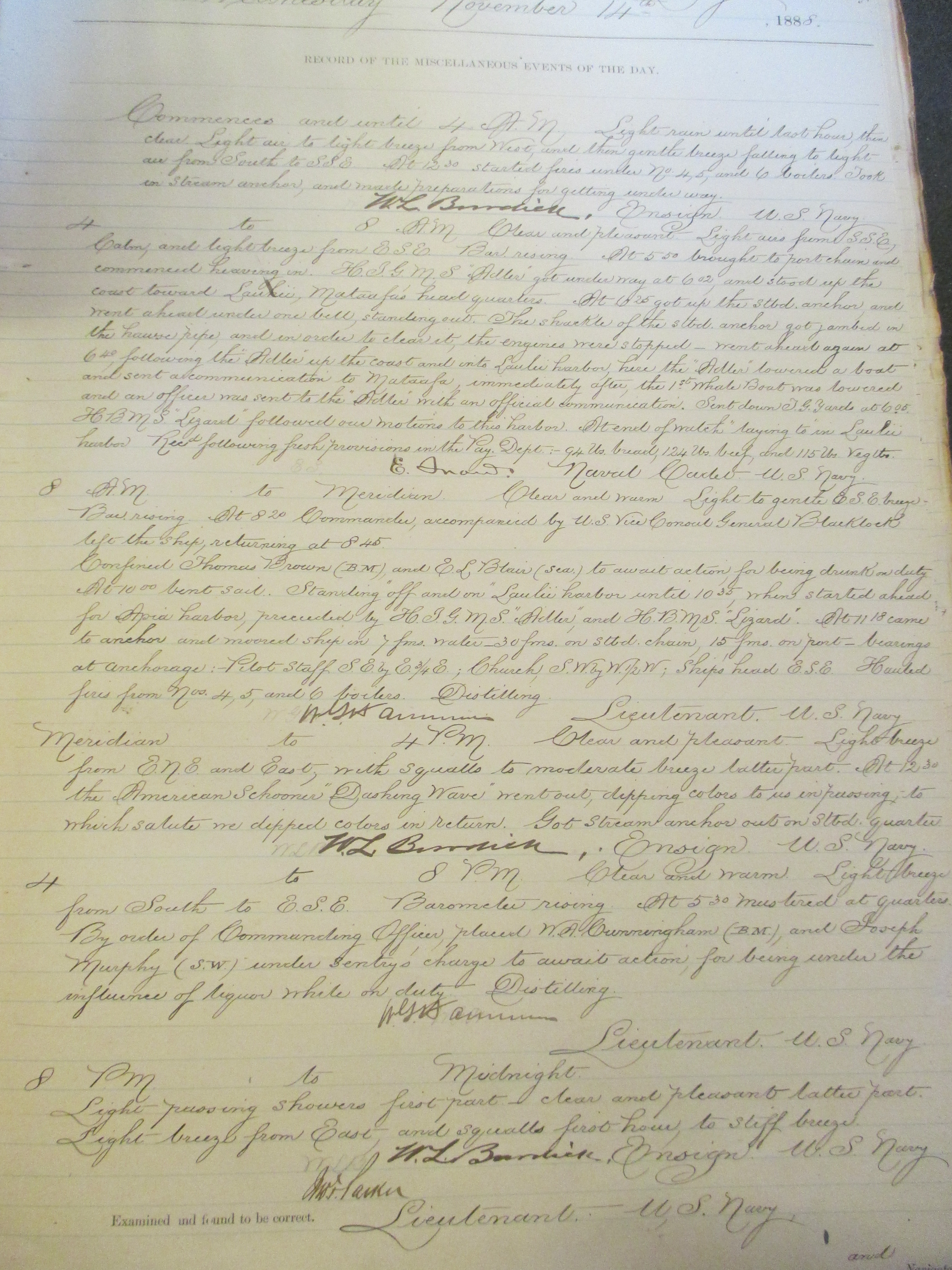 |
| Leary
would eventually leave, to be replaced by more U.S. warships. The
situation grew much worse as Tamasese's forces continued to lose
ground until they were confined to just those positions that the
German navy could hold. Tensions ratcheted up as Germany again
declared war, and the U.S. Consulate sought to protect Americans
caught in the crossfire (see image on right). Reports from Leary,
Blacklock and others in Apia reached Washington, leading to
reporting about an impending war and even making it into the
President's State of the Union Address. Then the hurricane
arrived, washing away the fleets. The purpose of describing these events is that they were important, even though they are often not discussed. The seminal books on great power conflict in Samoa, for example, all but ignore the security cooperation between Leary and Mata'afa. Instead, they spend a substantial amount of time detailing the way the great powers tried to resolve the crisis at conference a few years later, where a deal was reached on Samoan questions without Samoan participation. The problem discovered later by the great powers is that intrigues in Samoa began and ended in Samoa, not in Berlin or Washington. Despite great power interest in settling these questions, the conflict was renewed in even more earnest ten years later, leading to the partition of the islands and the acquisition of American Samoa, which remains a U.S. territory to this day. At the risk of self-promoting, a word on why I became interested in these question Samoa. My interest in Brokering Cooperation, the book manuscript for which this research is related, is not in the details of security cooperation, meaning I am not particularly interested in the specific military operations such as Leary's "Big Bluff" except to the note that they occurred. Instead, my interest is in why Leary would intervene? The traditional story told by International Relations scholars is that diplomacy happens inside of the beltway. Yet, in many important cases of great power entanglement, political elites make no decision of any significance during important periods of crisis and cooperation. The agents who matter--Leary, and in the book, Moors and Blacklock who recruit Leary--are the agents that make and shape foreign policy. The book develops a theoretical framework to understand the conditions under which agents with little institutional influence can broker cooperation between the United States and its non-state allies. |
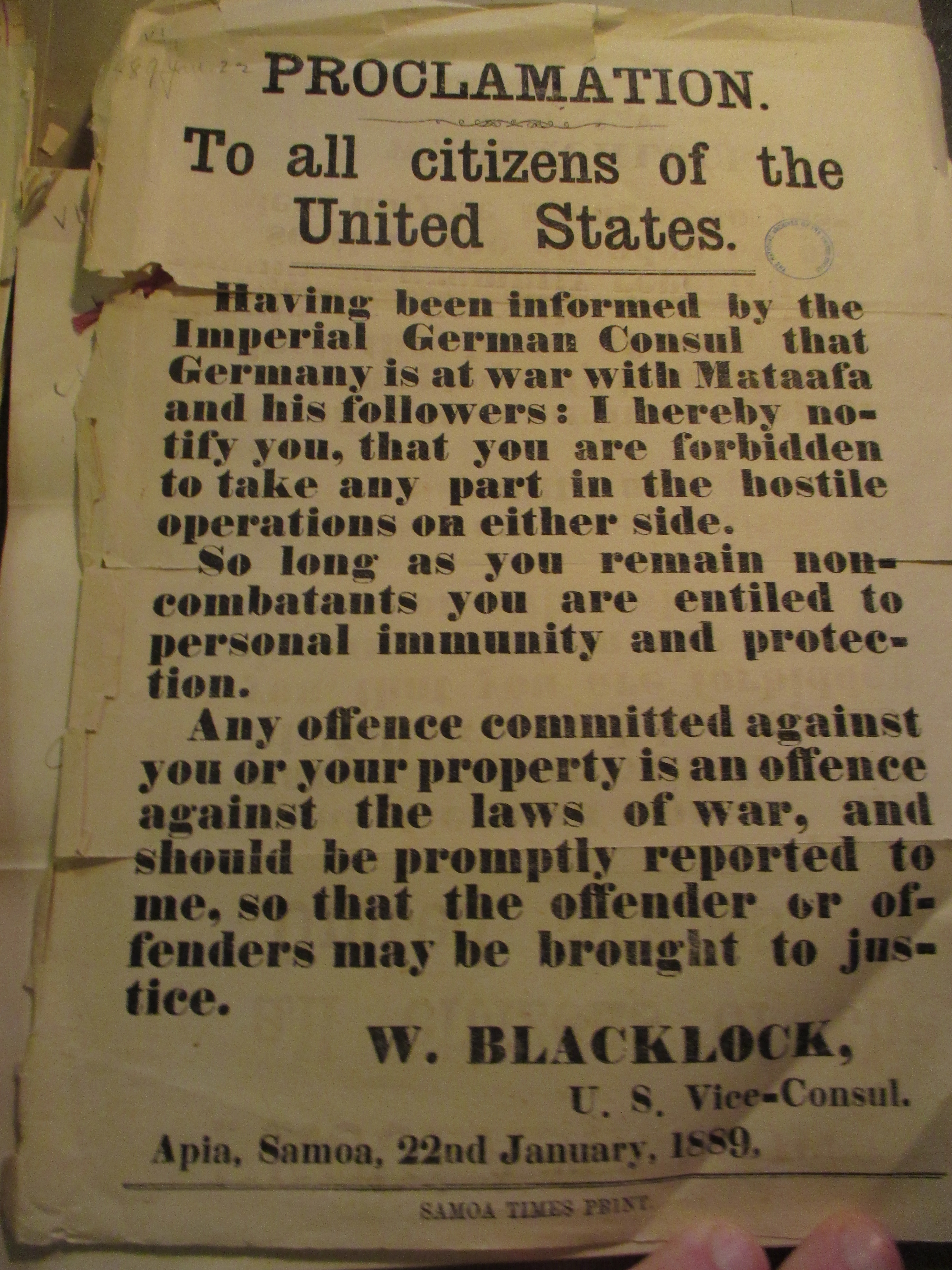 |